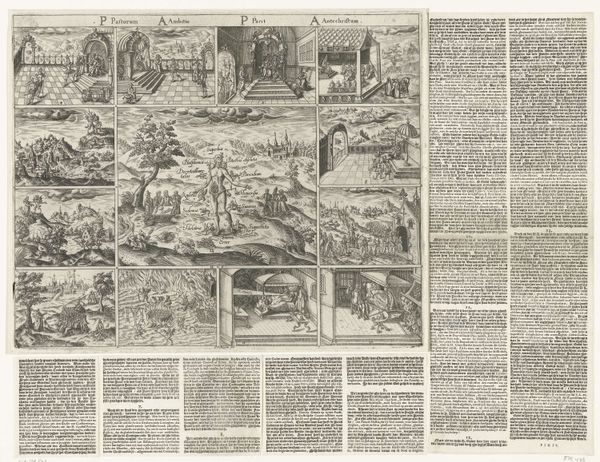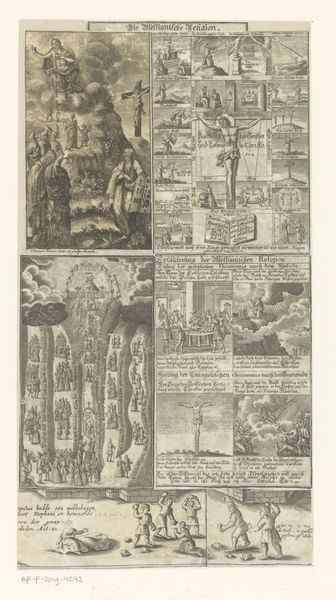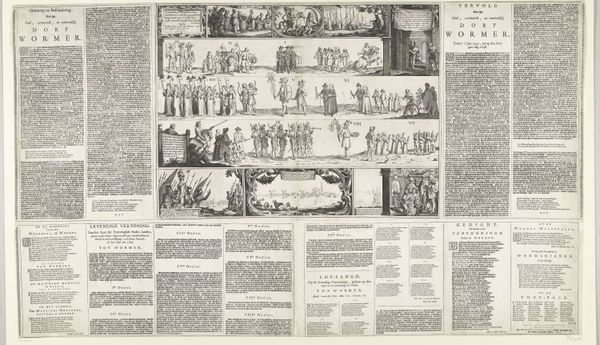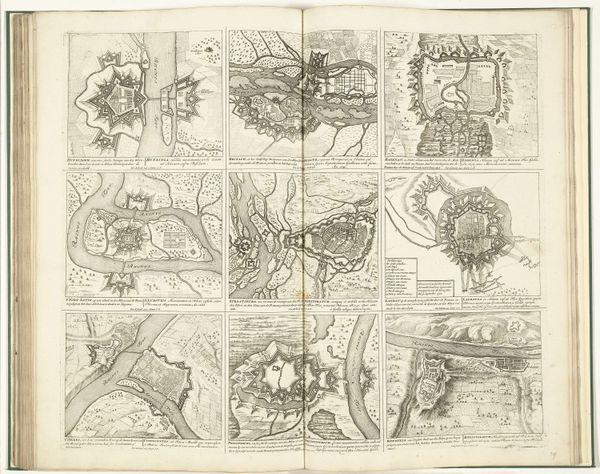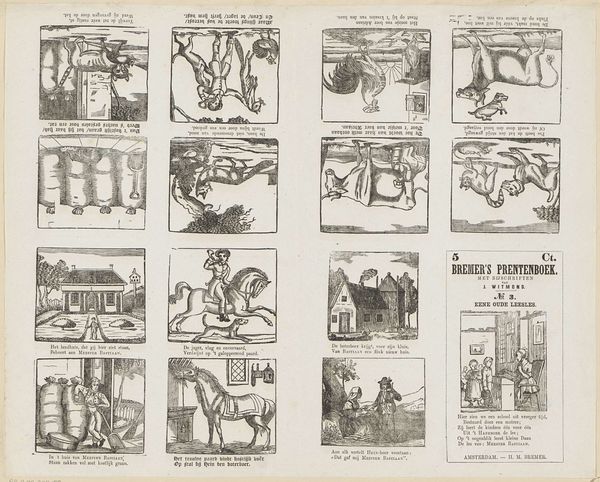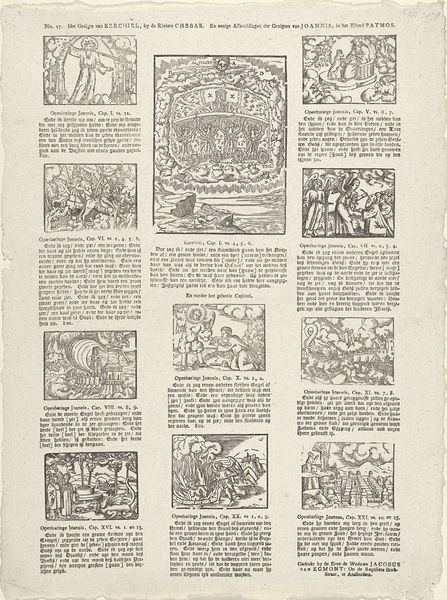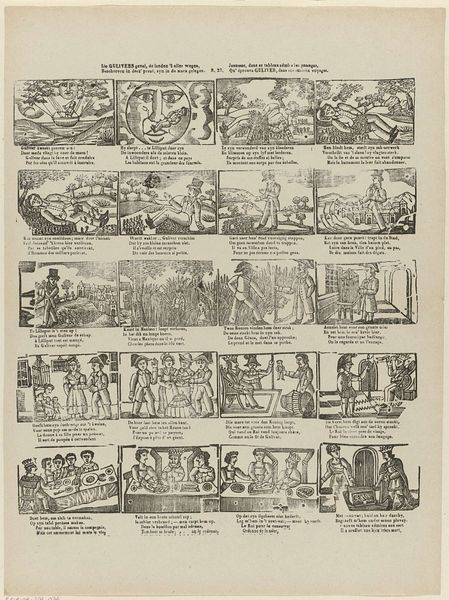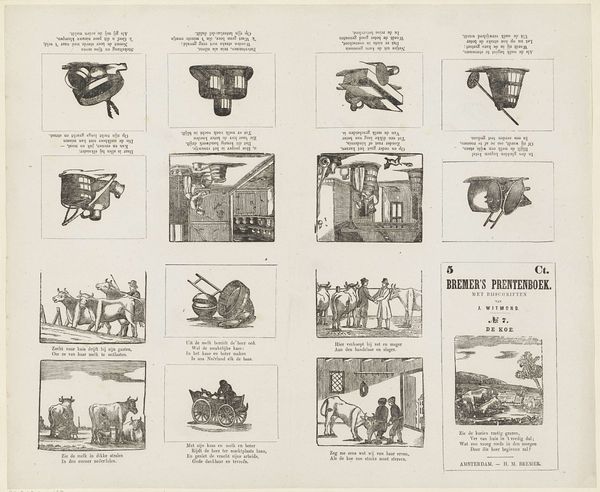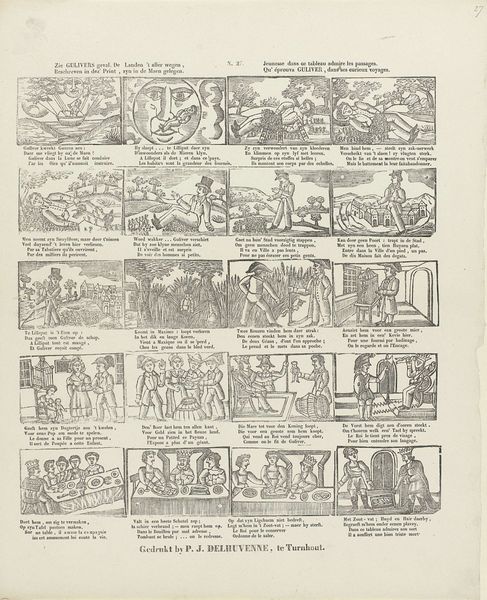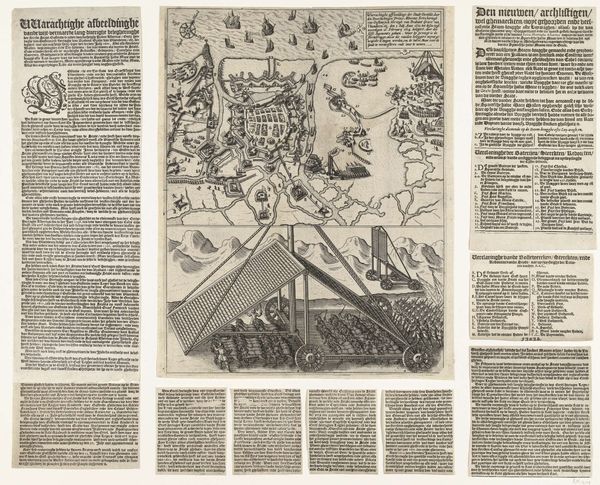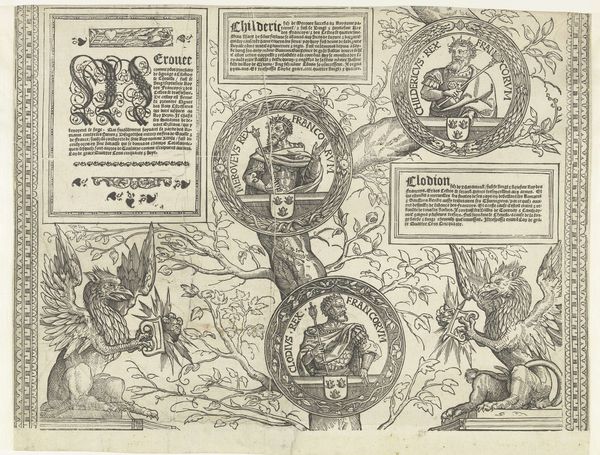
print, engraving
# print
#
geometric
#
history-painting
#
engraving
Dimensions: height 300 mm, width 390 mm
Copyright: Rijks Museum: Open Domain
Curator: So, here we have "Belegeringswerktuigen, 1726," an engraving print by Laurens Scherm, currently residing in the Rijksmuseum. Quite a clinical depiction of instruments of war, isn't it? Editor: Yes, it’s striking how schematic and almost…playful it appears at first glance, given the subject matter. So, what underlying narratives are at play here? Curator: Let’s consider the context. The 18th century was an age of Enlightenment, but also rife with conflict and burgeoning colonialism. How does seeing these “tools” laid bare like this—devoid of valor or romanticism—impact our understanding of war then? Doesn’t the clarity and precision highlight a calculated approach to conflict, far removed from notions of heroism? Editor: I see what you mean. It presents warfare as an engineering problem, rather than a heroic endeavor. Almost dehumanizing. What is the cultural significance of prints and engravings at the time? Curator: Excellent question. Prints democratized information. Suddenly, complex technologies were visually available. Whose hands would this knowledge empower, and at whose expense? Editor: It seems this seemingly detached illustration could inadvertently become a manual for both sides of a conflict, blurring lines between defense and aggression. This reminds me that technical advancements can have social implications far beyond the intent of their designers. Curator: Precisely! And think about the accessibility this format provided. These instruments of war weren’t confined to battlefields; they permeated intellectual spaces, influencing discourse and potentially shaping public opinion about war itself. Editor: This artwork forces us to question who benefits from the distribution of such knowledge and the ethical implications when design enables destruction. I initially saw a simple diagram but now appreciate how it exposes a much larger conversation about power, knowledge, and the societal impact of technological advancements. Curator: Indeed! It reminds us to always question the context in which technology emerges and the power structures it reinforces.
Comments
No comments
Be the first to comment and join the conversation on the ultimate creative platform.

